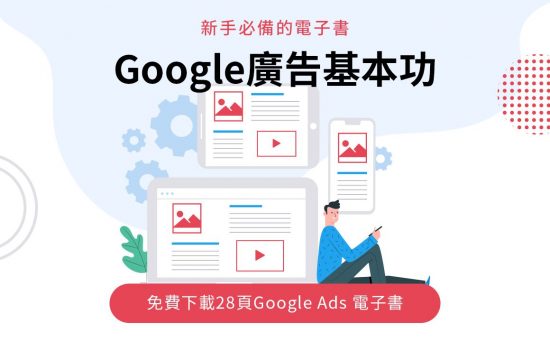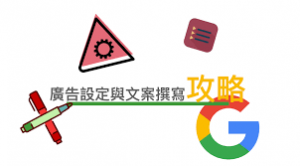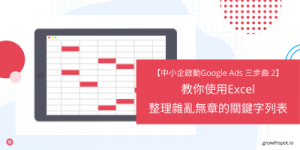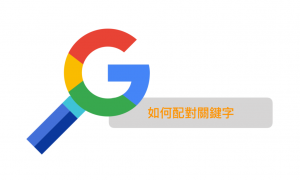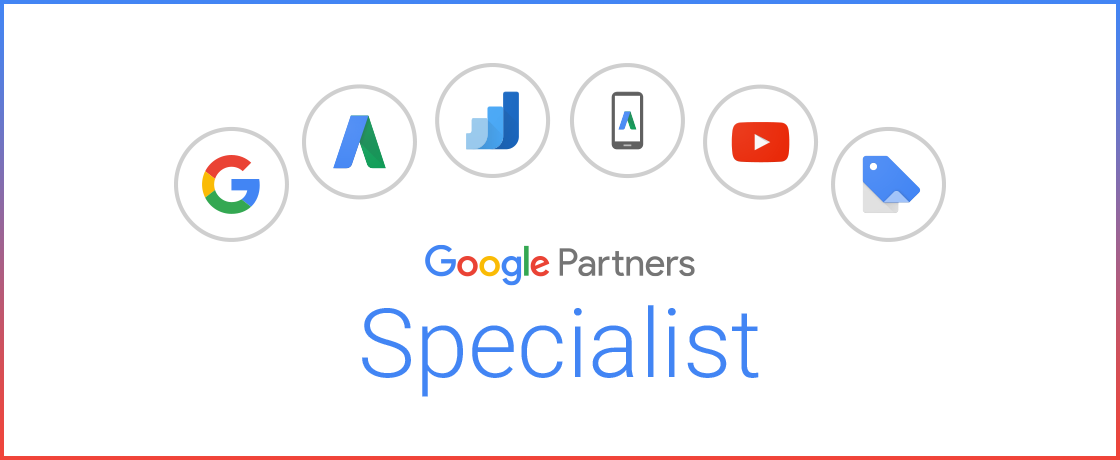Introduction
Okay, you might just be attracted by the title of this article and want to quickly know about the juicy ins-and-outs of running an online store and real costs behind an online shop. But before you scroll down and jump straight to all the financial figures, let me tell you why this article can be of help first.
For those who are doubting the power of E-commerce, this article will reveal the real financial expenses behind an operational online store so you can have a clear idea and understand the risks and rewards.
But why do YOU need to know this?
Because there are a lot of best-practice experts out there, especially in today’s internet world where anyone can read a bunch of blog articles then self-proclaim to be an expert. The noise created by these clutters and confuses aspiring entrepreneurs.
Of course, I’m not self-proclaiming to be an expert nor discounting the value of best practices, those are best practices for a reason and you can truly gain a lot of actionable insights from the best people in the industry. But on the other end of the spectrum, it’s also refreshing to ditch all best practices/theories/ideologies and just talk about real world numbers and results.
Why am I doing this?
Because I also experienced analysis paralysis with my first ever E-commerce store. Back in university days, I started an online store selling gym singlets. It reached the end of the build phase (more about phases later), but the store was never launched because my partner and I analyzed too much (or didn’t even do the proper analysis) and never convinced ourselves that we can make it.
The fear is legitimate and by showcasing the real expenses behind an operational store, maybe you can be convinced of the power of E-commerce and the little risk (if you know what you’re doing & comparing the level of risk to physical businesses) any aspiring entrepreneur needs to endure when you decide to dive head-in. By being completely honest with everything behind the scenes, I hope to inspire people to take a plunge, knowing that the pool is not that deep anyways.
Starting Point
The business that I’ll be totally transparent with is this table tennis online store. And to be really transparent with everyone, here are some disclosures:
- It’s a family business established in 2007 with physical locations but very minimal online presence. The online store was started by my brother and I and we were assured of the products being available already and we didn’t need to worry about initial capital for inventory nor storage costs. This is one important disclaimer since I didn’t start with nothing, at least I had inventory to start working around with. Although this is already a shortcut in terms of building an online business, I believe it isn’t a particularly big one, since all the products that we had were sourced from different brands around the world and not really of our own brand our self-manufactured.
- I will disclose all the expenses related to opening an online shop but not the costs related to product inventory since I think of them as cost for goods sold and they should be different for each industry. But the costs of opening an online shop and the related marketing expenses should serve as a good benchmark to scale for other industries.
So this post will be most relatable to 2 types of aspiring E-commerce entrepreneurs:
- Those that have a physical store and are thinking to expand online.
- Those who already have an idea what to sell online but aren’t sure about store expenses or marketing expenses.
Where do we start?
I will structure this post around the journey from having only inventory to fully launching the online store and getting our first order to the present day.
The 4 phases will be:
- Prepare
- Build
- Launch (Store is live to first 10 orders)
- Grow (11th order to present day)
I will detail what type of costs and how much were incurred at each phase and how I internally justified those costs. All transparent and real numbers from here on. Let’s go!
Prepare Phase
So we have inventory – a bunch of different products from different brands from all over the world, but now how do I start? I decided to use Shopline to build our own online store. As for the entire journey on how I ended up choosing to build our store on Shopline, you can refer to this article. (Another disclosure: I work at Shopline and although I know very well about some of the limitations of our platform, I still absolutely believe that it is the best alternative in terms of cost-effectiveness.)
So since we already choose to build our online shop using Shopline, we just have to prepare all the things to get started. First of all the preparations is to get a list of all the products that we have. This step is also quite easy since we have a list of all products being sold. No expenditures here.
The next thing in the preparation phase is to get our own domain ready. Since we have absolutely no idea about domains, I had to contact our outsourced domain hosting provider for them to transfer the domain out to GoDaddy (because it’s a platform that I’m familiar with and that’s easy to link to Shopline stores.) The cost here is around 64HKD. But if you’re totally new to the entire E-commerce thing, then you don’t really have to pay anything since most DIY e-commerce platforms usually provide a free custom domain (just like Shopline). Don’t use them if you have to pay for your own domain!
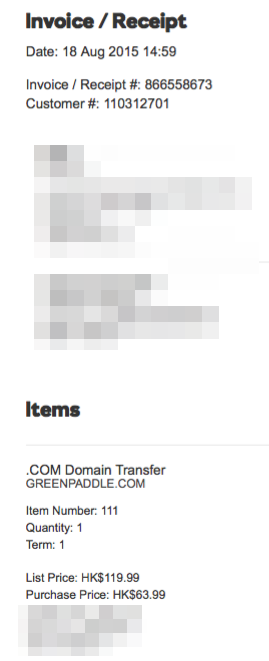
Cost: 64HKD
Total expense for me: 64HKD
Total expense for any new E-commerce merchant: 0
Next step in the preparation is to open a free-trial account in Shopline and start building.
Building Phase
Basically my strategy at this point was to maximise the 30-day free trial period, get everything ready, and launch the shop before we had to start paying. So on we worked!
My brother helped with the initial uploading of 200+ items from our list and I primarily set up all the necessary pages (contact us, homepage, etc.) of the online store and detailing out all the SEO components and things to include for each page. For this particular phase here, I didn’t spend anything since all we did was just manual work and spent nothing out of our pockets.
Other online stuff in this phase include managing our Facebook and Instagram pages as well as listing our stores on Google My Business (to get backlinks) which are all free of charge.
Total expenses: 0
Launch Phase (Store is live + First 10 orders)
Finally we’re at launch phase! Everything from the 200+ products, critical information pages, delivery settings, payment settings, and other necessary stuff are all ready to launch! We officially launched the store 7 days into the trial period. We’re actually quite surprised that we got to launch the store with only 7 days of preparation. (Proves that DIY E-commerce stores are really powerful. ?)
But the excitement from the launch died quickly as the days went on for us without getting any orders. As you can see from our billing and shop order screenshots, we only got 1 order in the trial period before we had to start paying. But even with just one order, I still believed this entire E-commerce thing can work and I decided to start paying for a Shopline plan. Looking back, I wish I had read this article and understood: “Building it doesn’t mean they will come.”
We had to upgrade to a paid plan on 08/08/2015 since the 30-day free trial is ending already.
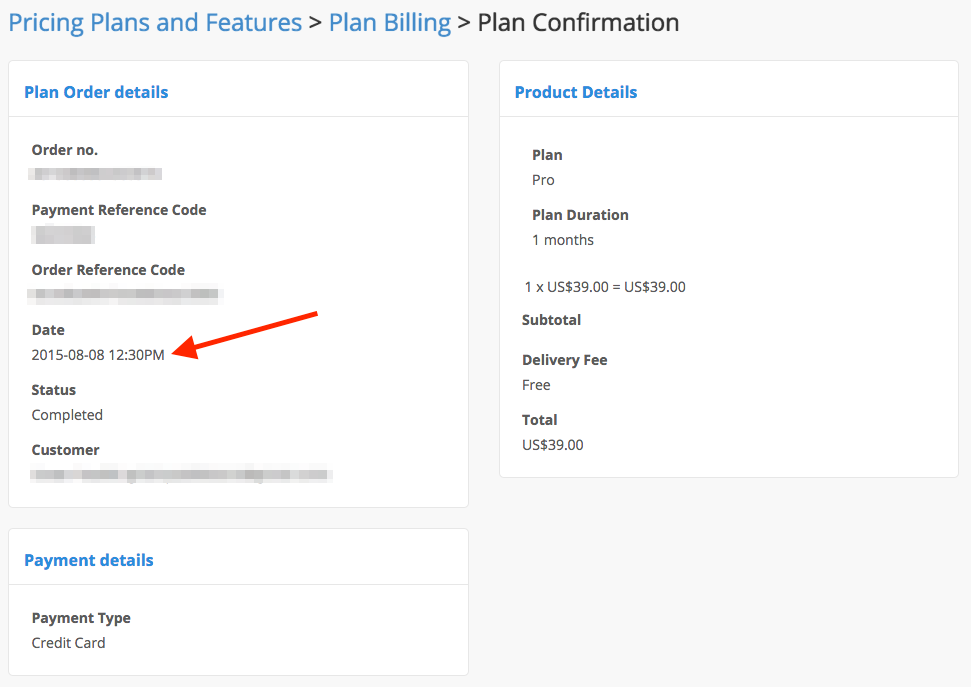
We received our first order on July 28, 2015 and then got our 10th order on September 12, 2015. It was a magical moment even if it took us 47 days to get from the 1st to 10th sale. Totally not impressive in hindsight but I think it’s a promising start for someone new to E-commerce.
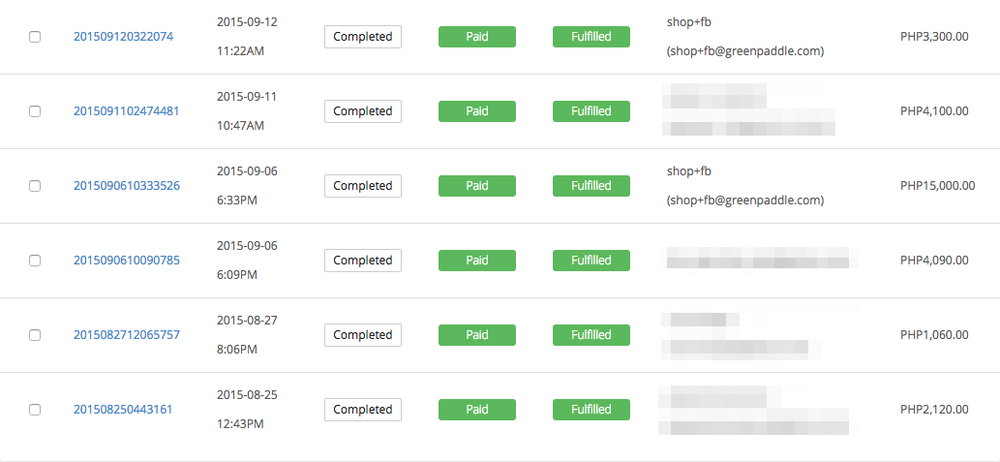

For the first 10 orders in the launch phase, we didn’t pay for any ads at all since I thought we weren’t ready yet. As you can see from the screenshot, there are 2 orders from Facebook that we just imported to our backend (shop+fb@greenpaddle.com). Those orders actually went through FB conversation and didn’t convert directly on our shop. But the first 10 sales also contain direct sales without any offline communication and that really convinced us that this thing is worth pursing and could grow bigger.
You might ask: Since “Building it doesn’t mean they will come.” is a fact, how did we get those first few direct sales without traffic from ads? Answer here is through all the free-ways one can think of: Facebook posts, Instagram announcements, Facebook group spamming, posting on forum threads.
For launch phase, here are our major costs (in chronological order):
- Shopline subscription plan: Because we were quite risk-averse and didn’t want to spend a lot initially, we opted for the monthly Pro plan. Although we could only upload 250 products, I believed it was more than enough for a new store.
- I paid for a subscription of Google Apps for Work so that our shop can look legit and professional with a “shop@greenpaddle.com” email address. I believed this was important for customer service and professional image. (Although I never got to check if this is true and really made a difference.)
- At that time my knowledge for technical domain stuff just went from 0 to 0.5 and thought I knew what I was doing and bought 3 similar domains for our brand: greenpaddle.co / greenpaddle.net / greenpaddle.ph. Afterwards, what I did was just to redirect all of them to greenpaddle.com. Looking back, it wasn’t really a strategic nor particularly smart move but I foolishly believed that we need to protect our brand and buy all the domains. (A total waste of money.)
Expenses:
Shopline Pro Plan Monthly subscription = US$39/month
Google Apps for Work = US$5/user/month
Other domains = US$30/year
Growth Phase (10th order to Present)
Growth phase will be quite long as I will list down all the things we did from the 11th sale to present. So first thing we did is to upgrade our Shopline plan from PRO to BUSINESS so that we can upload more products. Since we already had an idea that people are actually willing to make online purchases (This was a big question mark for a market like Philippines where E-commerce is really new immature), we decided to go all out and upload our entire catalogue to the online shop. We reached a list of 600+ products after the upgrade and had a more complete and varied offering.
Cost = HKD6696/year
Another growth phase thing that we started doing is also to start experimenting with various marketing channels to get more orders. Here I’ll list down all the channels that we tried and this is also the start of all the recurring marketing expenses.
AdWords
The holy grail of internet advertising? We started running exact-match ads on Sept 28, 2015 and so far we’re still using it to drive traffic.
This is an overall view of our AdWords channel:

So in aggregate, PHP67,178.23 were spent from Sept-2015 to Oct-2016. I started with exact-match keywords only and the CPA (cost per acquisition/order) was pretty bad at PHP1,138.20. But the thing here is that almost half of the campaigns are related to our other offerings (offline) and not just for the online shop and I still haven’t figured out a scalable way to track those offline conversions to our online campaigns.
Then June of 2016, I decided it’s finally time to expand to broad-match keywords and that’s why there is a spike in traffic around June of 2016. But it slowly dropped down as we did consistent and rigorous search query cleanups (SQR Cleanup) and bid adjustments.
I have to admit that we’re not doing a particularly good job at AdWords in terms of return on ad spend as you can see in the screenshots below from Google Enhanced E-commerce: (We only had this feature enabled February of 2016 so E-commerce conversion data were only available after that time:
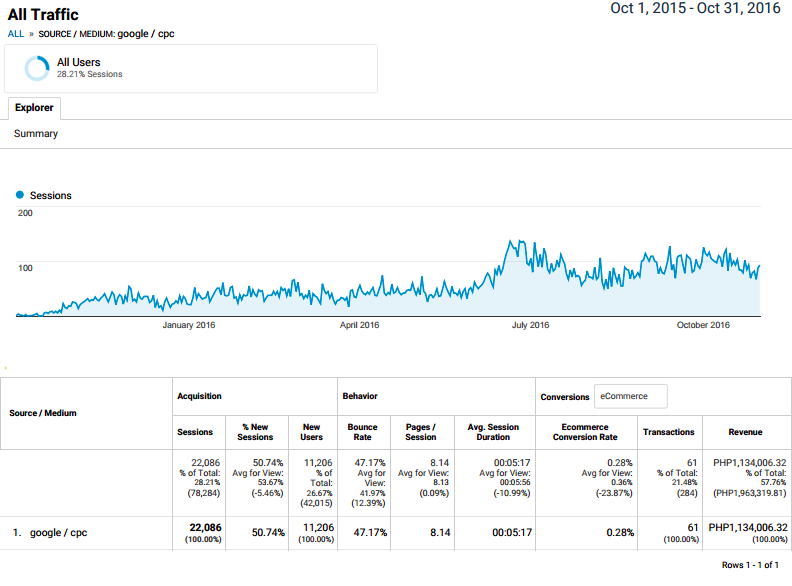
Total Spend: PHP67,178.23 (including costs for offline campaigns)
Total Return: 59 conversions @ PHP244,230.7 (Let’s go with AdWord’s conversion number of 59 and GA Enhanced E-commerce’s real revenue of PHP244,230.7. You see an inflated number in the screenshot above because of a wrong implementation that caused our shopping carts to be tracked in USD and not PHP.
Cost per purchase: PHP1,138.20
But how am I justifying such a high cost per purchase? Two things:
- Through non-scalable one-on-one surveys with offline customers, I am surprised that some customers actually learned of our brand via our CPC ads when they googled for related keywords.
- When looking at assisted conversions, it’s also quite surprising that CPC is one of the channels that has a high ratio for assisted / last click conversions. This knowledge coupled with knowing that CPC traffic has around 51% new sessions proves that I shouldn’t just shut down this channel without doing a deeper analysis and further optimization.

Regular Ads
I’m sure other advertisers could be getting positive ROI for their spend on FB ads but definitely not us. All of our FB ads (even if optimised for e-commerce purchases on our website) are not getting good results.
We tried traditional image ads for our store and also boosted posts for blog articles shared on Facebook but both campaigns only resulted to a lot of meaningless likes (the vanity metrics) that didn’t really result to any real business outcomes.
So after a couple of months of testing, we stopped the channel altogether and didn’t even look back.
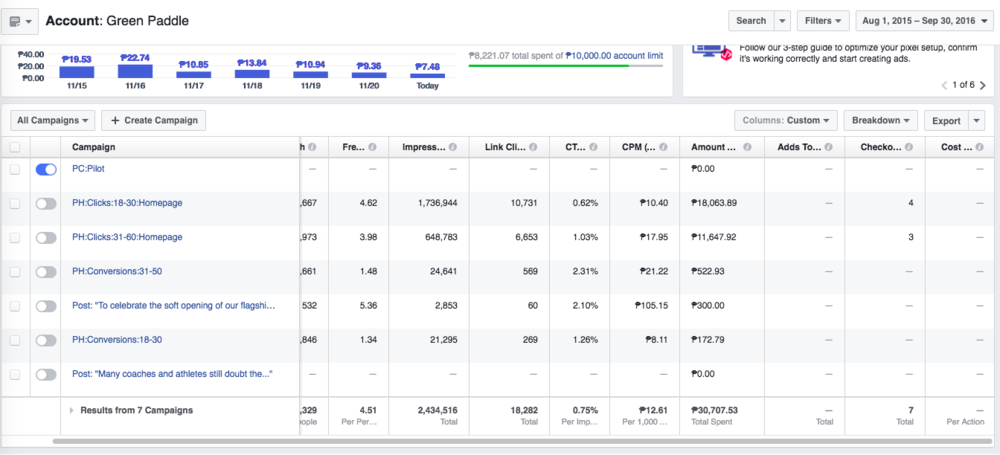
Total Spend: PHP30,707.53
Total Return: 7 conversions (No conversion value because we were still using the old FB conversion pixel at that time and it wasn’t configured to automatically capture shopping cart data.
Cost per purchase: PHP4,386.79
Really bad!
DPA Ads
Now Facebook’s DPA is a completely different animal. Basically this type of ad allows you to upload a product catalogue from your shop or setup an RSS product feed that will be fetched by Facebook automatically everyday at your scheduled time. Why is this awesome? Because this function combined with Facebook’s new all-in-one pixel allows you to re-market whatever a potential customer viewed or added-to-cart on your website with ease! Here is an example of what can be done:
Customer interaction on website tracked by FB Pixel:
- Customer visited page
- Customer viewed products
- Customer added to cart
- Customer didn’t checkout
With a product catalogue and FB’s new pixel, merchants can then create an ad that automatically retargets customers who:
- viewed products but didn’t checkout or
- added products to cart but didn’t checkout
with the EXACT items that they viewed on your shop. There are a lot more combinations available for you to use but overall it’s proving to be a good channel in terms of return on ad spend.
Sounds like a promising feature? Well, upon real-world testing, it’s so far so good:
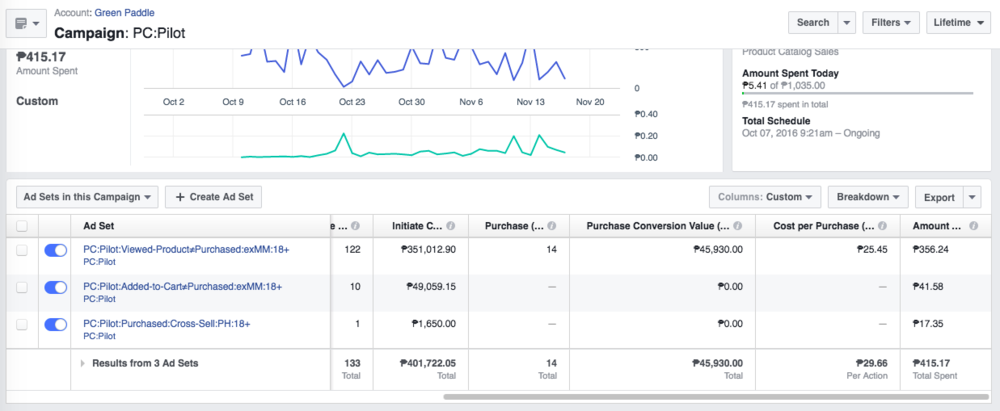
The Ad Set for people who viewed products but didn’t eventually complete the purchase has the most interaction and it resulted in 14 real purchases. The 14 purchases totaled to PHP45,930.00 in revenue but the total amount spent is only PHP356.24, so we’re at a cost per purchase of PHP25.45 which is extremely good. (Comparing to other channels like Adwords or to past FB ads which had cost per purchase at a ridiculous PHP4,389.79)
Total Spend: PHP415.17
Total Return: 14 conversions @ PHP45,930.00
Cost per Purchase: PHP29.66
Content Marketing
I’m a firm believer in the power of content marketing. For those not so familiar, content marketing could be defined as “Creating ridiculously high-quality and helpful content that would build relationships with your prospective customers, convince them to purchase, and make them a brand evangelist.” This is kind of related to SEO but I think that beginner E-commerce entrepreneurs should only really do the base SEO stuff first and then the rest of higher-level SEO work will come after you create enough great content on your site.
“Content is King”!
So, what are the costs for developing a content marketing channel? 3 things: a blogging platform, an email service provider, and people to write your content.
For the blogging platform, I settled with WordPress and hosted it on GoDaddy since WordPress is very flexible and has tons of 3rd-party support for a non-tech person like me. I really think that content marketing will be a major channel in the long run for our company and that’s why I didn’t hesitate to invest in managing another website just for blogging.
The other thing we had to pay here is an email service provider which I settled with GetResponse since I believe its contacts management system and newsletter/auto-response features are really robust despite the lack of integrations with some major platforms online. Also, there’s a freemium email service provider called MailChimp that is free up to 1,000 contacts in your email list. So you don’t actually have to pay for any email list provider when you’re just starting out with email marketing as an assistance channel to content marketing.
The other cost for this marketing channel is the actual content since it’s impossible for me to write all the content myself, I had to start outsourcing the content creation part so that’s another added recurring cost. But I still do the topics planning and final content auditing to ensure that every piece of content produced on the blog stays true to our content strategy.
You might not have to pay for all of these if you think content marketing is not going to benefit your business (but I doubt). And at initial inspection, content marketing might show very unpromising results, but that’s okay. Because the nature of the channel is more of an investment that pays dividends in the future. You won’t see immediate results for the content that you produce at this instant so just put in a lot of effort for every piece of content and observe how it performs over time.
That’s the exact mindset that I have and it’s why even with a very insignificant return for the blog articles and recurring (hosting and email service) costs, I still keep on investing in this channel. Not really easy but I believe in the long-run, this will prove to be a good investment.
You might wonder why I believe so much in content marketing, and well, that’s based on my experience focusing deeply on content as a digital marketing channel and see the returns of it after a year of perseverance. Proof? Shopline has an article targeting AdWords 教學(In English: AdWords guide) and it currently ranks number 1 in the search results for “AdWords 教學” even beating the official AdWords FAQ. You can say we beat Google at its own game. ?
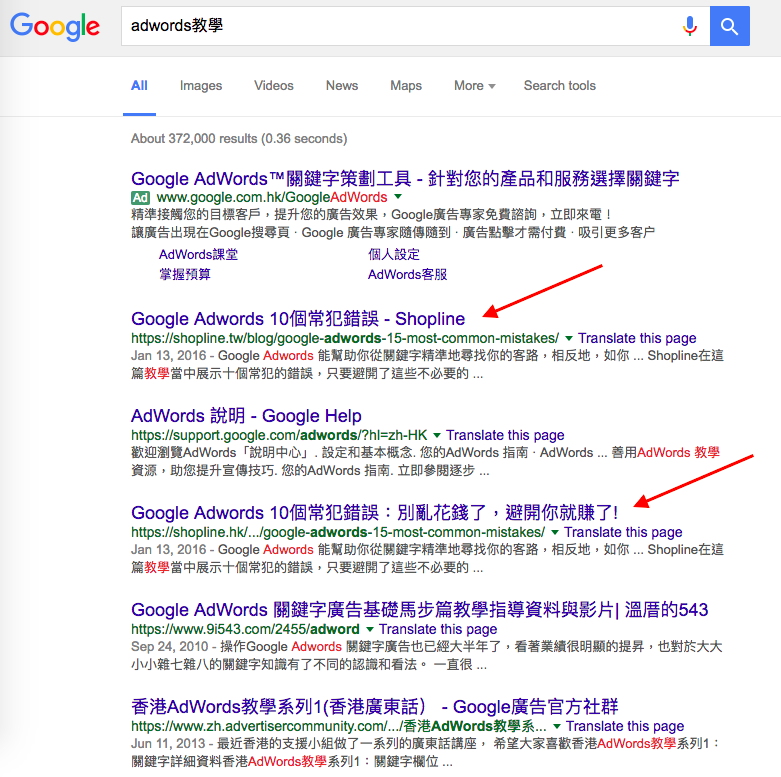
Searched using incognito mode in HK on 2016-11-25.
Although something to be proud of, the real business benefit from such a high-ranking web page is also tangible by exposing our brand to new visitors coming from search and generating quality leads. Inbound marketing at its finest!
Spend: Recurring costs for blog hosting, email service provider, and writers
Total Return: Insignificant
Other Stuff:
Current Website Look
www.greenpaddle.com
Current Blog Look
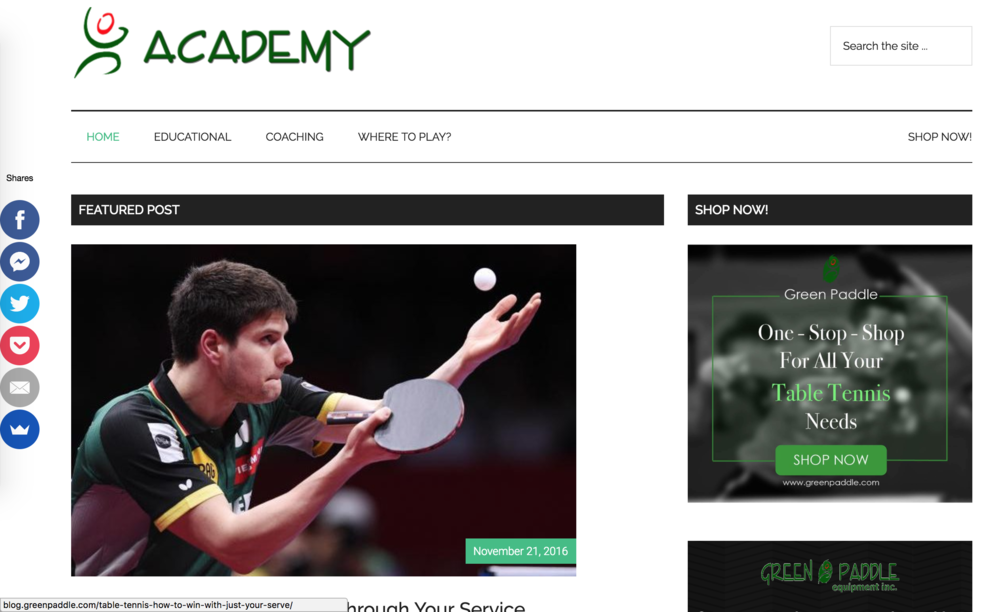
blog.greenpaddle.com
Shop Performance Overview
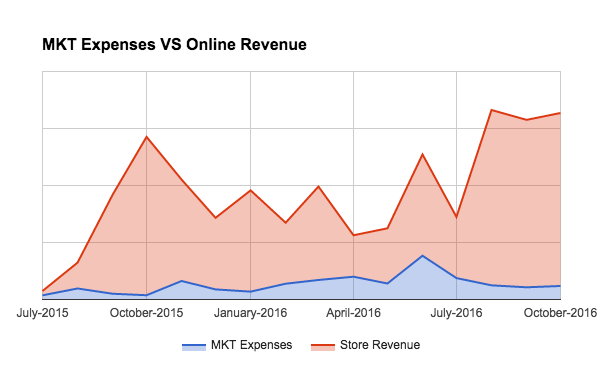
Shop Expenses Breakdown
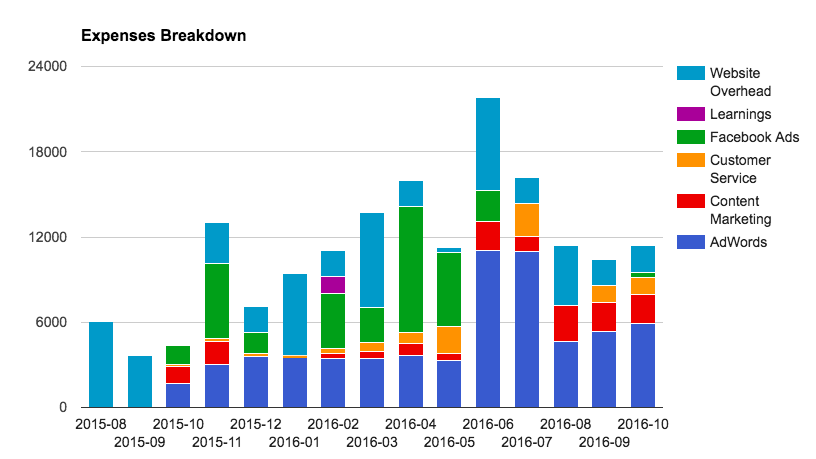
Conclusions?
By exposing all the costs (one-time and recurring) that were incurred in opening an online shop, I hope you’re much more convinced of the little risks in an online shop and not be afraid to take the plunge as long as you know what you’re doing.
Don’t know how to start? Subscribe to the Shopline Blog!!
P.S. My total man-hours spent on this entire E-commerce website after reaching growth phase is around 10hours per week.


